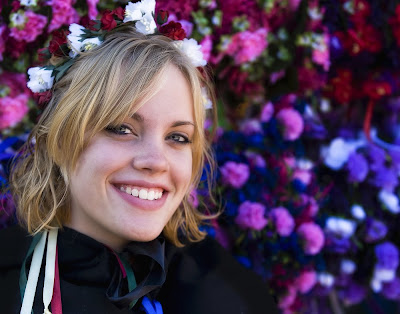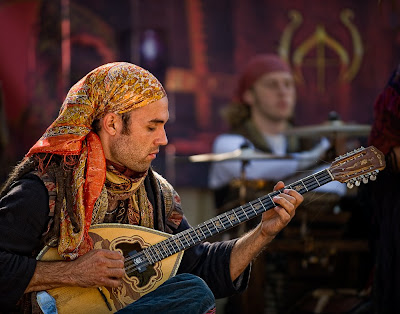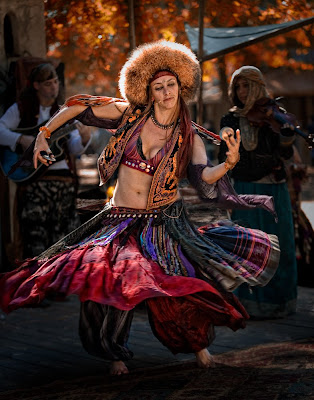
I realize that everyone might be tired of looking at my Texas Renaissance Fesival images, but I find them interesting because of how simple, yet effective, the lighting with my small softbox was. A lot of them you could have improved significantly with a second light or even a reflector, but, overall I think the lighting is pretty good on most of them.
I saw this young lady taking a photo with a point-and-shoot camera of one of her pieces of pottery. I made a few suggestions of how she might get a better photo, and amazingly, she did. From there, Steve and I had two models for a few minutes. Both shots were taken from inside her shop.
In the first shot, Steve held the softbox very close and turned the power down to 1/32. You can see the catch light in her eye and reverse engineer where the softbox was in relation to the camera position. I really wanted to capture how her striking red hair framed her face. Needless to say, she was a lot of fun to photograph as you can see by her pose.
Camera settings: Nikon D3, 70-210 f/2.8 at 150mm, shot at ISO 200, f/6.7 and 1/125.
Post Processing: Lightroom—tweak white balance, set white and black point, and added mid-tone contrast, cloning some small hot spots out of image, cropped to 11x14 format.
Her assistant was younger and not nearly as out-going. I spotted this lace curtain hanging in the back of the store with some light streaming in from the back. I thought it might make for an interesting stage for her. Again, my VAL held the softbox about two feet from her face so that we would get very soft, wrap around lighting. You can easily see that the light was above her and to camera left by the shadow under her noise and the catch light in her eyes.

Camera settings: Nikon D3, 70-210 f/2.8 at 200mm, shot at ISO 200, f/6.7 and 1/125.
Post Processing:
Lightroom—tweak white balance, set white and black point, and added mid-tone contrast, cloning some small hot spots out of image, cropped to 11x14 format.
Photoshop—used nik Silve Efex Pro to convert to B&W using their platinum preset.
Both Steve and I shot about 10-12 shots of each of these ladies in probably less than 20 minutes, which shows that once you understand how your lights and camera work, you can get pretty good result with a few basic pieces of lighting and some knowledge.
You need to check-out the really nice photo that Steve posted yesterday from the Renaissance Festival. You can check out his blog by clicking here
Hope everyone has a nice day.








